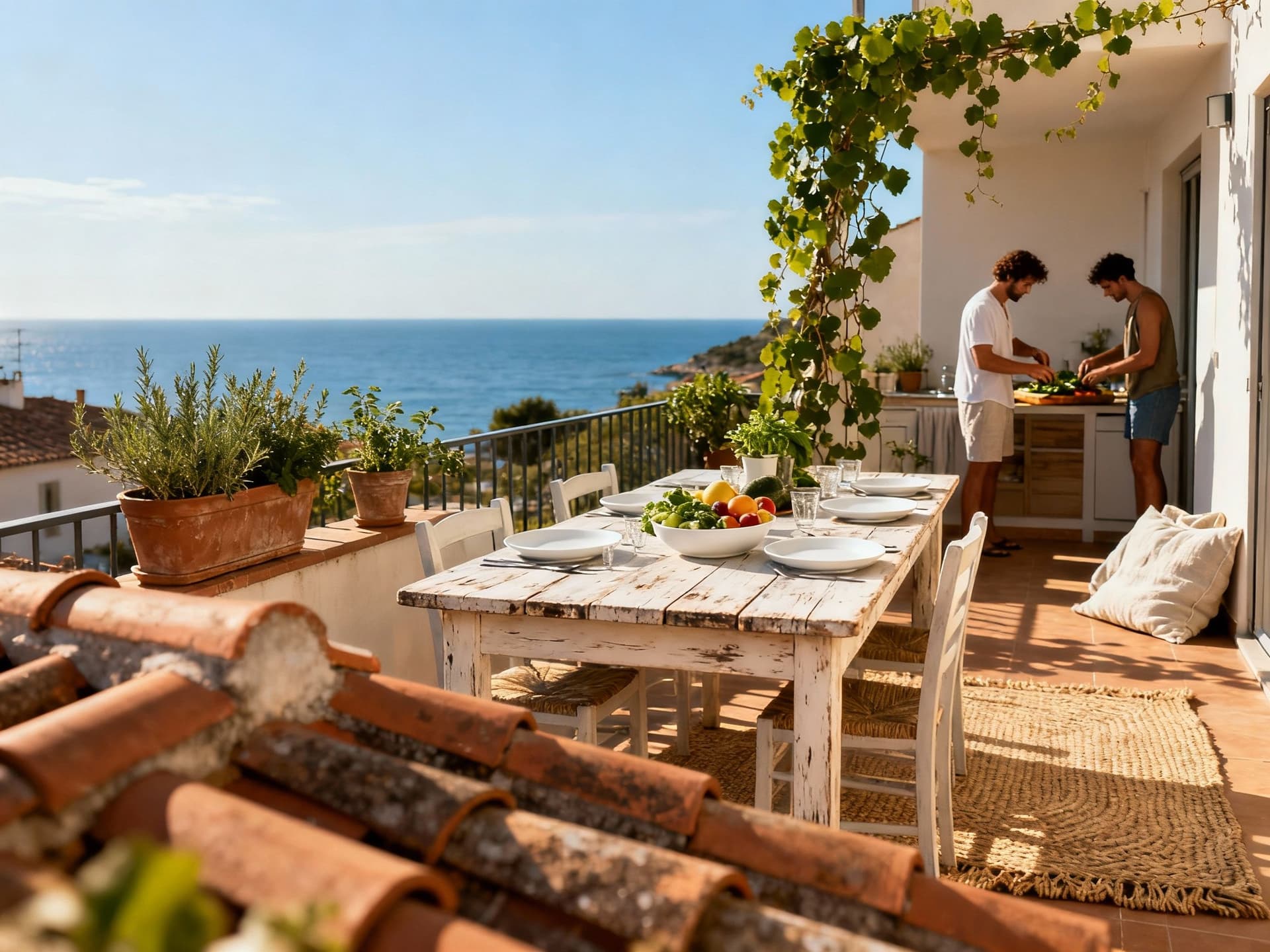Paris vs Province: When Short‑Lets Hurt French Yields
City romance vs. provincial yield: France rewards lifestyle buyers who model regulation, seasonality and street‑level demand before betting on short‑lets or coastal income.
Imagine sipping an espresso on Rue du Commerce in Paris’s 15th, then catching a regional TER to a coastal market town where fishermens’ breakfasts are the day’s headline. France offers that split personality: metropolitan density and provincial calm. For international buyers the choice isn’t just aesthetics — it’s rental demand, regulatory risk and yield math. Recent market analysis highlights large price dispersion and shifting short‑let rules that materially change return assumptions.
Living the French life — city pulse vs. provincial rhythm

Paris mornings are about markets on Boulevard Raspail and métro commutes; provincial life moves at a different tempo — weekend markets in Aix‑en‑Provence, surf mornings on the Landes coast. Tourist arrivals and overnight stays remained strong into 2024, supporting short‑stay demand in many regions, but growth is uneven: dense urban centres and coastlines attract most visitors. That distribution matters when modelling rental occupancy and achievable nightly rates. Local festivals (fête de la musique, regional wine harvests) create predictable seasonal peaks for provincial lets that an investor can monetise if local regulation permits.
Neighbourhood spotlight: Paris central arrondissements
Central Paris remains a price outlier: average prices per square metre are several times higher than regional markets, compressing gross rental yields but offering capital stability. Streets like Rue du Bac or the Île Saint‑Louis deliver strong long‑term liquidity but yield compression; investors must accept lower immediate cash returns for price resilience. For short‑let strategies, Paris now carries regulatory risk that can flip an attractive income model into one that’s legally constrained.
Spotlight: Secondary cities and coastal towns
Lyon, Bordeaux, Nantes and coastal towns like Biarritz or La Rochelle show stronger gross yields per euro invested because entry prices are lower and visitor flows sustain seasonally high occupancy. In many of these places a well‑located two‑room apartment can command higher percentage yields than a comparable Paris flat. But expect seasonality and tenant mix shifts: student and long‑stay demand in university cities; holiday peak weeks on the coast. Matching property type to local demand is non‑negotiable for predictable net returns.
- Lifestyle highlights that shape rental appeal
• Morning market routines: Marché d’Aligre (Paris), Marché des Capucins (Bordeaux) — reliable footfall for neighbourhood vibrancy • Transit nodes: proximity to RER/TER stations in Île‑de‑France or regional TGV links in Lyon • Cultural anchors: opera houses, university campuses, and annual events (vine harvests, surf competitions) • Coastal amenities: public beaches, surf schools, summer festivals that lift short‑stay ADRs
Making the move: practical considerations that change yield math

Lifestyle preferences must be translated into legally compliant revenue models. Since 2024 municipalities have tightened rules on short‑term rentals: registration numbers, night limits for primary residences and change‑of‑use permits for second homes can restrict or ban tourist lets in tight markets. Paris, for example, has increased controls and fines — a material risk to any income forecast that assumes unrestricted Airbnb nights. Always model a 'regulation‑on' and 'regulation‑off' scenario in yield projections.
Property styles and real rental performance
Traditional Haussmann flats are high‑value assets with limited supply and strong long‑term capital performance; they suit long lets and executive tenants but deliver lower gross yields. New build developments outside city centres offer modern amenities and energy performance, attracting higher rents relative to price in some regional markets. Rural houses and village properties can produce good holiday income but suffer vacancy in off‑season; a convertible floor plan (separate entrance, self‑contained unit) materially improves yield resilience.
How local experts turn lifestyle into realistic forecasts
- 1. Obtain local occupancy data: ask agencies for street‑level short‑stay registration counts and seasonal ADRs. 2. Stress‑test yields: model conservative occupancy (50–60% annual for coasts outside peak months) and compare to long‑let rents. 3. Confirm legal status: request the numéros d’enregistrement and any municipal change‑of‑use history before offer. 4. Include operating costs: management, taxe de séjour collection, utilities during vacancy and potential conversion costs if platform listings must be removed.
Insider knowledge: what expats wish they'd known before buying
Real‑world buyers report three common surprises: stronger enforcement than expected, hidden municipal fees or requirements, and the seasonal income rollercoaster. In Paris, municipal inspections ahead of major events increased enforcement intensity — a reminder that political focus can turn into regulatory action quickly. Expat landlords who treated short‑lets as a simple play often had to reconfigure to mid‑term rentals or find local co‑hosts with compliance expertise.
Cultural integration and tenant mix
Language and local networks affect management quality and tenant screening. In university cities you’ll find a stable market of students and academics; in provincial resort towns the tenant pool is seasonal and often younger. Building trust with a local agency or bilingual property manager reduces vacancy and prevents cultural missteps such as misinterpreting rental norms about deposits, inventory checks or neighbour relations.
Long‑term lifestyle and returns
Over five to ten years France’s market rewards location and structural value — transport nodes, university clusters and protected coastal squares. Pricing volatility in 2022–24 reset some markets and created arbitrage opportunities where yields improved as prices corrected. For investors who want both lifestyle and returns, a blended approach works: own one city studio for liquidity and one provincial two‑bed for yield, with local management to minimise friction.
Conclusion — fall for France, but build a defensible income model. The romance of café culture, coastal weekends and châteaux gardens is real and investable, but so are rules, seasonality and price dispersion. Start with street‑level data, verify change‑of‑use and registration numbers, and stress‑test yields under tighter short‑let regulation. Pair a lifestyle choice (where you want to live) with an evidence‑based rental strategy and local expertise — that’s how you protect both quality of life and return on capital.
Dutch investment strategist who built a practice assisting 200+ Dutch clients find Spanish assets, with emphasis on cap rates and due diligence.


